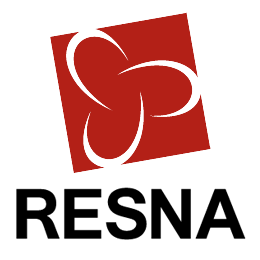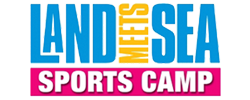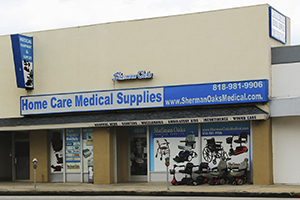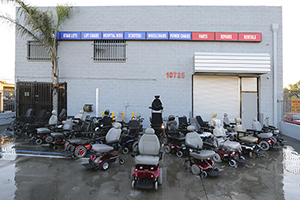ProBed Medical The Freedom Bed
- Downloads
- ProBed Brochure
- What's Included
- Free Shipping
- 3 year limited Warranty

ProBed has created a BETTER way to care for the immobilized individual!
| Weight | Weight Capacity | Sleep Surface Width | Sleep Surface Length |
|---|---|---|---|
| 410 lbs | 400 lbs | 38" | 78" |
The Freedom Bed™ Overview
ProBed's Solution - The Freedom Bed™
ProBed has created a BETTER way to care for the immobilized individual!
The Freedom Bed™ is a unique, computer-controlled, therapy system that manually or automatically turns the bed-user to different stable sleeping positions without the aid of caregivers or institutional staff.
The bed closely mimics the body's natural nocturnal motion by mechanically repositioning it in order to re-establish blood flow to compressed tissue and thus prevent the formation of life-threatening bedsores and other complications of immobility. The motion is timed (rather than random) when under computer control and the rate is adjustable to permit the accomodation of a wide variety of sleeping patterns. Clinical studies and testimonials confirm that the ultimate benefit of the Freedom Bed™ is better health and an improved lifestyle for bed-users and their caregivers.
How does The Freedom Bed™ work?
The horizontal surface of the bed that supports the mattress is hinged into three longitudinal sections. The user of the bed is positioned on his/her back in the centre of the three-part platform (the sleeping platform).
As the bed smoothly and quietly rotates to one side the outer section of the three-part platform on the lower side turns up to form a “wing” which supports the body along its entire length from the ankle to the shoulder. Thus the bed-user is carefully cradled by the bed’s structure to prevent sliding and shear forces that can increase the potential of developing bedsores. Any pressure transferred to this side of the user is thus dispersed along the entire frame of the body. The wing on the upper side of the platform lowers during this process to properly balance the entire platform and provide integral strength throughout the structure. As the bed reverses the rotation the lower wing rises as the higher wing lowers so that, at the horizontal position, all three sections of the platform are horizontal. The bed then automatically rotates to the other side to complete the cycle.
The design of the bed allows for the turning of the user along the spinal axis that creates a minimal feeling of rotation (turning). The slow rate of rotation, combined with the smoothness and quietness of operation, allows the user to enjoy uninterrupted sleep throughout the night.
Another feature unique to The Freedom Bed™ is the air-powered head and leg raising system that allows the user to be raised into the sitting position. The system is unique in that it can be adjusted to meet the requirements of each individual user of the bed rather than being built to accommodate the “average” person. The key benefit of the design is the low-pressure air cushions under the mattress that raise the user. These cushions of air conform to the user's body shape, and provide a complete range of ergonomic positions. This also minimizes pressure under the sacrum thus reducing the risk of pressure sores developing while elevated.
Automatic Operation
A key feature of the Freedom Bed™ is its ease of operation. User-friendly control panels allow caregivers to easily program the bed for automatic use or to adjust any of the bed’s operations manually. Changing the operation of the bed from automatic to manual or from manual to automatic is a one-step procedure. Additionally, different styles of override buttons are available to accommodate the needs of users wanting to change the programming of the bed and to move from automatic to manual and vice versa. With the high number of features and functions available, there is also a system of safety “lock-outs” permitting the caregiver to determine the choice and number of functions that bed users may access from their control panel.
The functioning of the bed allows the user to be smoothly and quietly turned through a 60° range of rotation - from the horizontal position to up to 30° left and 30° right. Rotation can be programmed to stop at any position to meet the specific comfort and positioning requirements of the user. Additionally it allows the bed to “dwell” at the programmed position (left, centre or right) for any period of time between one minute and a maximum of four hours. A typical turning schedule might be as follows:
- Horizontal for 30 minutes, then
- 23° right for 1 hour, then
- Horizontal for 30 minutes, then
- 27° left for 45 minutes
The program will automatically repeat with the next move being back to horizontal.
The ANGLES and TIMES should be determined through consultation with the user's caregiver and doctor and are influenced by a number of factors including user's size, weight, skin condition and comfort levels and also by the primary reason for which the user requires turning (e.g. avoiding bedsores or improving respiration).
The Freedom Bed™ Applicable Medical Conditions
The clinically proven Freedom Bed™ is recommended for persons suffering from temporary or permanent immobility. This could include:
- Spinal cord injuries causing paraplegia and quadriplegia (with or without ventilator)
- Muscular dystrophy and multiple sclerosis
- Severe head injuries and stroke
- Severe respiratory ailments such as chronic obstructive pulmonary disease
- Immobility due to aging
- Cancer
- Guillain Barre Syndrome
- AIDS
- Coma
- Amputations
- Osteomyelitis
- Degenerative disk disease, post-spinal fusion and laminectomy
- Rheumatoid Arthritis
- ALS
- Any other condition where turning assistance is required
Tube Fed Patients
The torso raising position is also beneficial for tube fed bed users since the bed user can still be rotated with the torso raised up to 30°.
A higher elevation angle can be achieved by combining head elevation with Reverse Trendelenburg.
Complications of Immobility
Bed Turning, Pressure/Decubitus Ulcers and More
A mobile person generally turns approximately once every 10-12 minutes while sleeping. This action provides for healthy blood circulation, stimulation of body organs and movement of body fluids. When a person becomes temporarily or permanently immobilized however, the blood supply to that part of the body that is under pressure is restricted. If that pressure is not regularly relieved, and the blood supply restored, the affected tissue dies and sloughs off resulting in the formation of a bed sore/decubitus ulcer. These occur most commonly on the buttocks, sacrum, hips and heels and can be life-threatening if they become infected.
If that isn’t bad enough there are many other medical complications associated with immobility. These include (but are not limited to):
- Pneumonia
- Venous stasis
- Thrombosis
- Embolism
- Stone formation
- Urinary tract infection (kidney and bladder)
- Muscle wasting
- Bone demineralization
- Atelectasis
Decubitus Ulcers (or Bedsores)
Decubitus ulcers are of major concern to the sufferers, their caregivers, and the medical community. The scale of the problem is immense. It is estimated that approximately 1.2 million people are suffering from bedsores at any one time in the United States alone and almost 70% of sufferers are over 65. It is reported that there are 60,000 deaths annually from complications arising from bedsores and the current cost to the US Health Care System to treat these and other associated conditions is estimated at anywhere from US$15 - $40 billion annually.
Traditional Methods of Prevention
The traditional way to avoid the formation of bedsores is for a family member, caregiver or institutional employee to regularly turn (reposition) and stabilize the patient in a new position to relieve tissue compression and re-establish blood flow. (It is recommended that this be done at a minimum of every two hours). This has to be done around the clock and unfortunately this manual process has a considerable number of drawbacks that include:
- The immobilized patient is woken up during the night by the turning process
- Caregivers, family members or institutional staff can suffer severe back damage from the effort of lifting
- Family members need to be in attendance 24 hours per day and this can lead to severe sleep deprivation and severe emotional stress
- In institutional settings the need to frequently turn immobilized patients is costly both financially and in terms of employee time
- The patient may be in a home environment where the family members are unable to physically provide the necessary regular turning
- If support is not available at home then patients may have to be relocated to a facility leading to a loss of privacy, dignity and the inability to create a life apart from institutional living.
The Freedom Bed™ Features
The many powerful features of the Freedom Bed™ have been designed with versatility and user friendliness in mind. These features have been designed to provide the ultimate in comfort and flexibility so that the bed-user or his/her caregiver can adjust the bed to meet individual needs. All mechanisms have been designed to operate as quietly as possible so that the bed-user is not woken up during rotations and particularly not during the night-time rotations.
Lateral Rotation - Manual or Automatic Operation
The Freedom Bed™ has been designed so that the adjustable features of the lateral rotation system, the dwell times and angles of rotation, can be set both manually or automatically through the bed’s user-friendly control systems. This allows the bed-user/caregiver to set the bed to a customized turning schedule, in addition to many other benefits for the bed user that positively impact overall health and wellbeing.
Angle of Rotation
The lateral rotation system provides for the user to be smoothly and quietly turned through a 60° range of rotation along the spinal axis. Turning from the horizontal position to up to 30° left and 30° right provides pressure relief and beneficial kinetic therapy. Rotation can be programmed to stop at any position to meet the specific comfort and positioning requirements of the user. A digital screen on the main control panel provides a read-out of the angle settings.
Dwell Time
The variable dwell time feature allows the bed-user/caregiver to determine the effective dwell-time at any of the three dwell positions (left, right and horizontal). Each position has an individual setting and can be set to the exact minute – between one minute and four hours per position.
Air-Powered Torso and Leg Raising Systems
The Freedom Bed’s unique low air pressure torso and leg elevating system provides an extraordinary level of comfort and versatility. The system works through the inflation of air cushions under the mattress that allow the mattress to conform to the bed user’s shape and provides a complete range of ergonomic positions.
The torso system can effortlessly raise the bed user from anywhere between horizontal and 70°. This is an ideal position for eating, watching TV or reading. It also assists with patient care and wheelchair transfer. The torso raising position is also beneficial for tube-fed bed users since the bed user can still be rotated with the torso raised up to 30°. A higher elevation angle can be achieved by combining head elevation with Reverse Trendelenburg.
The leg raising system is ideal for bed-users that obtain pain relief with their legs in an elevated position. The air pressure system for the legs has been designed so that the heels are supported in a low-pressure position when the cushion is inflated.
To supplement the leg raising system ProBed offers a range of leg bolsters that provide excellent support, especially for client s with leg contractures. The design of the bolster provides effective and comfortable separation of the legs to avoid the development of pressure sores on high-risk areas (inner side of knees, ankles etc.) The bolster also has a pad under the heels that can be easily removed to avoid, or assist in the trea™ent of, sores on the heels.
Powered Hi-Lo Elevation System
The powered Hi-Lo Elevation system allows the bed to be raised to an upper height of 34 inches or lowered to a base height of 22 inches when measured at the top of the mattress. The lower height supports transfer to and from a wheelchair and the upper height makes it easier to provide personal care to the bed-user. To help prevent caregiver back injuries while caring for the user, the platform can be placed at any height between the two extremes.
Powered Trendelenburg/Reverse Trendelenburg Mechanism
The powered Trendelenburg/Reverse Trendelenburg systems will tilt the bed by up to 12° in either the head-up or head-down direction. The head-down (Trendelenburg) position can be used for postural drainage for bed-users that have respiratory difficulties, whereas the head-up (Reverse Trendelenburg) position provides relief to bed-users with gastro-esophageal reflux and permits both manual and automatic rotation for bed-users requiring a respirator or other breathing device.
Safety Features
The bed-user and caregiver’s safety have been very much in the forefront of the design of the Freedom Bed. A number of safety features have been built into the design. They are:
- 12 Volt DC power supply with on-board charger and battery power to prevent the risk of shock and loss of operation as a result of power failures
- Movement sensors and “lock-out” capability to ensure safe positioning.
- For example the bed cannot be rotated if the head-raising system has elevated the bed-user more than 30° from the horizontal position. Nor can the head-raising system be used if the platform is not level (flat) laterally.
- A unique dynamic side-rail system that moves with the bed as it rotates.
- This design prevents any pinch or fall hazards to the patient.
- A stable transfer surface and height adjus™ent for movement in and out of wheelchairs and lifts
- Single touch buttons to position the bed user for CPR
- A single touch override button for bed-users capable of controlling their own positioning
Quality Construction
All components are of the highest quality. All moving parts use stainless steel pins housed in composite mounts that eliminate the need for scheduled maintenance. All fasteners are stainless steel. The bed frame utilizes strong lightweight aluminum and steel sections for long-term structural integrity. All finishes are a baked-on powder coat finish for durability and ease of cleaning.
The headboard and footboard are made of wood for aesthetic purposes and all drive components and mechanisms are totally enclosed in the headboard and/or footboard to provide excellent soundproofing and to ensure that there is no risk to the user or caregiver. The air-powered torso and leg raising systems are constructed from welded, clinical grade fabric and have undergone exhaustive testing and peer review.
Power Systems
The Freedom Bed™ is powered by a low voltage system (12 V DC) that eliminates the risk of shock to the bed user or their caregiver. The bed’s built-in battery can power the bed for a number of days to continue repositioning in the event of power failures (the number of days varies depending on the turning schedule). A 12 V “smart charger” system ensures that the battery is always fully charged.
Voice Control Option
With the addition of the “Freedom Bed IR Control Interface”, most Infra Red capable Voice Control and ECU systems available can be programmed to control all functions of the Freedom Bed™. Ask us for details!
Low Operating Costs
The operating costs of the Freedom Bed™ are significantly lower than other options since regular maintenance or replacement of consumables is not required. In addition, the use of DC power systems significantly reduces power costs compared to most other medical beds.
Warranty does not apply to woodwork, battery, fuses or to any component that, in ProBed’s opinion, has been misused, altered, neglected or damaged by accident, presence of abnormal conditions of operation or handling.
The Freedom Bed™ Benefits
Benefits for the Bed User
The many features of the Freedom Bed™ provide a number of key benefits to immobilized bed-users such as:
- The automated turning process allows for more frequent turning to address the multi-system pathophysiological events associated with immobility. Also referred to as kinetic therapy, this turning not only provides pressure relief to prevent or treat bedsores but it can also produce, for example, a dramatic reduction in the incidence of respiratory problems and urinary tract and bladder infections
- Significantly better quality of sleep since the bed-user does not have to be manually turned during the night and is not woken up by the bed turning. This creates better mental clarity, better health and an improved lifestyle, free from dependence on caregivers during the night
- The opportunity to live in a home setting instead of an institution
- Pain reduction
- The bed can still rotate when the torso is in a raised position up to 30°. This can be added to the Reverse Trendelenburg position, if suitable, for a maximum included angle of approximately 42°. A pillow adds more elevation again. Torso elevation is of significant benefit to people who are tube fed and/or respirator dependent.
- Prevention or reduction of gastro-esophageal reflux
- Better respiratory health and clearance of upper respiratory and oral secretions
- Reduction in spasticity and abnormal tone.
- Discomfort
- Improved bowel regularity
- No dehydration and subsequent electrolyte imbalance since the bed creates no heat
Benefits for Home-Based Caregivers
The physical and mental tasks associated with caring for immobilized persons can place a considerable burden on spouses, parents, etc. The physical requirements of manually turning an immobile person frequently mean that family members become unable, through age and/or infirmity, to provide the required assistance. This results in institutionalization of the family member.
The Freedom Bed™ has been designed with the caregiver very much in mind and provides considerable benefits along with the ability to provide a significantly better quality of home-based care.
The Freedom Bed™ automatically turns the bed user during the night thus eliminating the need for the caregiver to get up every two hours. Sleep deprivation is considerably reduced and thus caregiver physical and mental fatigue are decreased.
There is a reduced need to manually turn or reposition the user and thus a decreased chance of the caregiver developing neck, shoulder or back injuries.
The head-raising and leg-raising system and bed height adjus™ent assists in positioning the user for personal care and for transfer to and from a wheelchair.
Benefits for Institutions Providing Care to Immobilized Patients
There are many significant benefits that accrue to institutions as a result of investing in the Freedom Bed™. These include:
- Increased productivity of nurses and facility support staff by reducing the amount of manual patient turning that is required. This allows staff members to use their time more effectively and productively in the care of their patients
- An effective way to treat and/or avoid pressure ulcers and other complications of immobility
- A method to protect healthcare personnel from debilitating back, neck and shoulder injuries (caused by moving and/or turning patients) that lead to considerable time off work and the associated costs of sick days, worker's compensation claims, and hiring of replacement staff.
- Reduced Staff Turnover, reduces costs of recruiting, hiring and training, and of using more expensive staff when CNA’s not available
- Reduction in legal claims against healthcare facilities for bedsore development.
Cost Benefits to the Health Care Industry
For an industry struggling to get its costs under control the Freedom Bed™ offers significant savings by focusing on a strategy of prevention of the problems before they occur. It offers:
- Substantially reduced direct medical expenditures associated with repeat hospital admissions to treat pressure ulcers and other complications of immobility such as bladder and respiratory infections. It has been found that prevention of bedsores is 2.5 times less expensive than trea™ent - Oot-Giromini (1989)
- Support for a de-institutionalizing strategy that allows chronically immobilized patients to be moved from hospitals back to their homes (or to assisted living environments)
- Avoidance of costly readmissions from bedsores or other systemic complications
- A method to reduce the length of hospital stay for specific groups of patients. Treating critically ill patients with kinetic therapy has been shown to reduce intensive care stays by up to 24 percent. Increased movement helps reduce risk of infection and complications from pneumonia and other respiratory problems that affect about 20 percent of intensive care patients. A study in 1987 that was published in the journal “Stroke” showed that the risk of infection for stroke patients placed on normal hospital beds was 2.9 times greater when compared with a study group of patients placed on rotating beds (Stroke 18, No 3 May-June, 1987).
- Significantly reduced costs of compensation claims for nursing and support staff injured during repositioning or transferring of immobilized patients. In a study conducted for the Workers Compensation Board of British Columbia (Canada) in 1996 it was found that manual lifting, transfer or repositioning of residents (without assistance from mechanical aides) was responsible for 63% of all back, neck and shoulder injuries.
- Substantially reduced time lost by nursing and support staff from neck, back and shoulder injuries. Reduces the problems of finding replacement staff.
- Significantly reduced number of staff involved in turning patients (particularly during the night). This will reduce costs and allow staff to focus on providing a significantly higher quality of care.
The Freedom Bed™ Models & Accessories
ProBed Medical Technologies Inc. has developed five models of the Freedom Bed™.
Each model is built on the foundation of the company’s unique, patented, well-proven lateral rotation system. Enhancements to the basic model include a variable height (High-Low) platform, Trendelenburg and Reverse Trendelenburg positioning and a unique air-powered head and leg elevation system that provides extremely comfortable seating while reducing seating pressure.
| FEATURE | PAR3-A2 | PAR3-A3 | PAR3-A2F | PAR3-A3F | PAR3-A3FX |
|---|---|---|---|---|---|
| Automatic or Manual Lateral Rotation | |||||
| Three Sectional Wound Care Mattress | |||||
| Head and Foot Boards | |||||
| Dynamic Side Rails | |||||
| Heavy-Duty Casters | |||||
| Battery Backup with “Smart” Charger | |||||
| Air Powered Head and Leg Elevations | |||||
| Powered Hi -Lo Elevations | |||||
| Trendelenburg / Reverse Trendelenburg | |||||
| Standard Length - 78" Sleeping Surface | |||||
| 8" Extended Length for Tall Users - 86" |
Optional Accessories
| Description | Item Number |
|---|---|
| Optional Roho Dry Flotation Therapeutic Insert: Built Into Mattress, Below Sacrum, Coccyx and Buttocks. | P3A-16R1 |
| Standard Replacement Mattress: Three Sectional Triple Laminated, Medical Grade Memory Foam Mattress with wound care fabric cover. Anti-Microbial, Anti-Static, Fluid Resistant And Vapor Permeable. | P3A-16R1 |
| Patient Override Button – Pillow Switch: Easily Activated Touch Switch Allowing Patient Control Of Rotation - soft easy to press cushioned switch | P3A-1700 |
| Patient Override Button – Finger Switch: Easily Activated Touch Switch Allowing Patient Control Of Rotation – Attaches to hand / fingers by Velcro | P3A-1711 |
| Bolster: Arm Positioning Aid With Zippered Cover | P3H-300 |
| Bolster: Knee Elevation, for Leg Abduction And Positioning, Memory Foam | P3H-400 |
| Fitted Cover Sheet: Special Wound Care Fabric, 4-Way Stretch, Anti-Microbial, Anti-Static, Fluid Resistant And Vapor Permeable. | P3H-250 |
| Fitted Sheet: White Poly/Cotton Blend Medical Bed Sheet - stretchy | P3H-100 |
| Bed Delivery Wheel Kit: For Easier “On-Side” Movement Of Beds During Delivery and Installation, or Moving. | P3H-500 |
| Infra-red Voice Activation/ECU Interface Unit | IRFBCLSJ |
| Finger Switch for patient control of rotation | |
| Optional “half” side-rails | |
| Side rail pads | |
| Other wood options for end covers |
- 3-Year Warranty on Mechanical and Electrical Components
- 2-Year Warranty on Mattress
Our service area covers most of Southern California including Los Angeles and surrounding cities.
To see a full list of cities covered in our service area please click here.
- Agoura Hills
- Alhambra
- Altadena
- Arcadia
- Arleta
- Artesia
- Avalon
- Azusa
- Baldwin Park
- Bel Air
- Bell
- Bell Gardens
- Bellflower
- Beverly Hills
- Bradbury
- Brentwood
- Burbank
- Cahuenga Pass
- Calabasas
- Camarillo
- Canoga Park
- Carson
- Cerritos
- Chatsworth
- Claremont
- Commerce
- Compton
- Covina
- Cudahy
- Culver City
- Diamond Bar
- Downey
- Duarte
- Eagle Rock
- El Monte
- El Segundo
- Encino
- Gardena
- Glendale
- Glendora
- Granada Hills
- Hawaiian Gardens
- Hawthorne
- Hermosa Beach
- Hidden Hills
- Huntington Park
- Industry
- Inglewood
- Irwindale
- Kagel Canyon
- La Canada
- La Crescenta
- La Habra Heights
- La Mirada
- La Puente
- La Tuna Canyon
- La Verne
- Lake Balboa
- Lake View Terrace
- Lakewood
- Lancaster
- Lawndale
- Lomita
- Long Beach
- Los Angeles
- Lynwood
- Malibu
- Manhattan Beach
- Marina Del Rey
- Maywood
- Mission Hills
- Monrovia
- Montebello
- Monterey Park
- Montrose
- NoHo Arts District
- North Hills
- North Hollywood
- Northridge
- Norwalk
- Oak Park
- Olive View
- Oxnard
- Pacific Palisades
- Pacoima
- Palmdale
- Palos Verdes
- Panorama City
- Paramount
- Pasadena
- Pico Rivera
- Pomona
- Porter Ranch
- Redondo Beach
- Reseda
- Rolling Hills
- Rosemead
- San Dimas
- San Fernando
- San Gabriel
- San Marino
- Santa Barbara
- Santa Clarita
- Santa Fe Springs
- Santa Monica
- Sepulveda
- Shadow Hills
- Sherman Oaks
- Sierra Madre
- Signal Hill
- Simi Valley
- South El Monte
- South Gate
- South Pasadena
- Stonehurst
- Studio City
- Sun Valley
- Sunland
- Sylmar
- Tarzana
- Temple City
- Thousand Oaks
- Toluca Lake
- Toluca Woods
- Topanga
- Torrance
- Tujunga
- Valencia
- Valley Glen
- Valley Village
- Van Nuys
- Ventura
- Vernon
- Walnut
- Warner Center
- West Covina
- West Hills
- West Hollywood
- West Toluca
- Westlake Village
- Westwood
- Whittier
- Winnetka
- Woodland Hills




 Accreditation Commission for Health Care
Accreditation Commission for Health Care
 RESNA Accredited
RESNA Accredited





















